From 15 to 24 July 2025, SFD successfully held the 2025 International Summer School – Design and Innovation Leadership . The programme attracted thirteen outstanding undergraduate and postgraduate students from ten countries, including the United Kingdom, Canada, Montenegro, Serbia, and Singapore.
Centred on design as common thread, the Summer School combined academic lectures, specialised workshops, cultural experiences, and corporate visits. It aimed to cultivate participants’ innovative thinking and leadership skills, to promote mutual learning and co-existence among different civilisations, and to build a bridge for cross-cultural dialogue among students with diverse academic backgrounds and cultural perspectives.
Academic Depth: Thematic Courses to Refine Innovative Competence
This year’s Summer School was structured around four intensive courses, designed to map out dual core competencies in Design Thinking and Innovation Leadership . Participants were guided across intellectual frontiers spanning self-awareness, technological boundaries, cultural creativity, and cross-media integration.
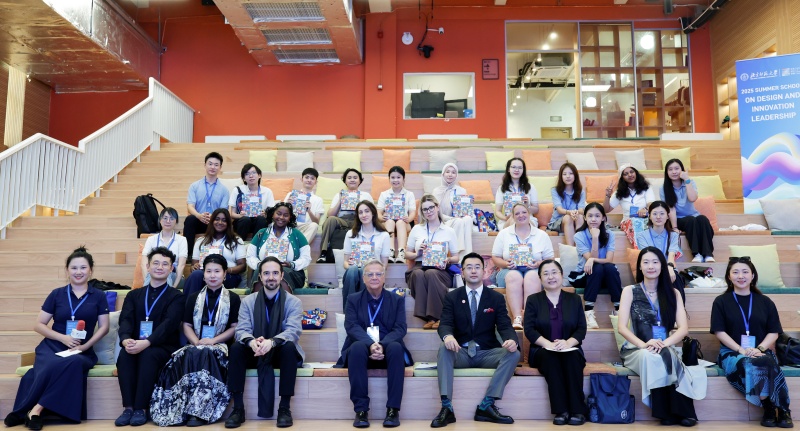
Gao Peng: Expanding Cognitive Boundaries through Design Thinking
At the opening ceremony, Professor Gao Peng, Dean of SFD, delivered a welcoming address to the international students who had travelled from afar. He noted that SFD had carefully curated a rich programme for this Summer School, encompassing academic lectures, practical workshops, and field visits. He expressed the hope that participants would engage in deep exchange, spark intellectual dialogue, broaden their horizons, and fully experience both the academic vitality and the richness of Chinese culture – returning home with invaluable insights.
Subsequently, Dean Gao Peng inaugurated the Summer School’s first session with the course Design Thinking and Innovation . He opened with the thought-provoking question, “What is art?” , sparking critical reflection, and illustrated through video materials the unique value of art education in expanding cognitive horizons. The course included modules on Life Narrative Creation and Performance Art Practice: participants expressed their self-awareness of “past-present-future” through painting and achieved emotional resonance by overcoming language barriers in face-to-face interaction. Drawing on his experience in founding Today Art Museum, Dean Gao elaborated on how innovations such as virtual curators, AR applications, and digital exhibition halls can address the traditional challenge faced by art museums – namely, the imbalance between the time spent travelling and the time available for viewing. In doing so, he demonstrated innovative pathways by which technology can empower cultural spaces.
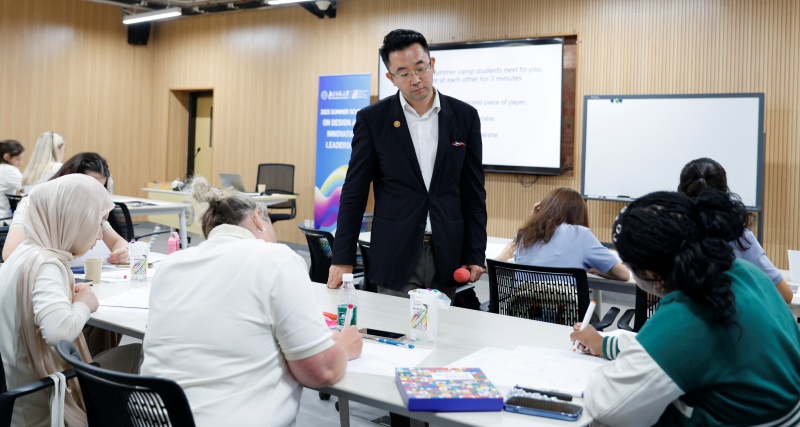
Tony Brown: Questioning the Essence of Design in the Post-Digital Epoch
Tony Brown, Distinguished Professor at Beijing Normal University, delivered a lecture entitled Art & Technology: Post-Digital Epoch , offering students a profound reflection on the essence of design in relation to technology. Beginning with the historical trajectory of technological development, the course confronted the central question: “As technology grows ever more powerful, what role remains for design?” Drawing on decades of experience in art and education, Professor Brown emphasised that designers must transcend the mere use of tools to grasp the underlying systems of logic that govern technology: “You are not only users, but also participants within the system. It is essential to remain critically aware of how technology shapes both judgement and modes of expression.”
Professor Tony Brown presented his installation artworks created in Shenzhen and Guangzhou. These case studies vividly illustrated how design can serve as a “translator between humans and technology” – using dynamic structures and interactive mechanisms to foster emotional connections and social dialogue within public spaces. During the course, students conducted rapid experiments around themes such as “information systems”, “perceptual disruption”, and “bodily experience” , transforming abstract concepts into tangible works and internalising the creative principle that “making is thinking”.
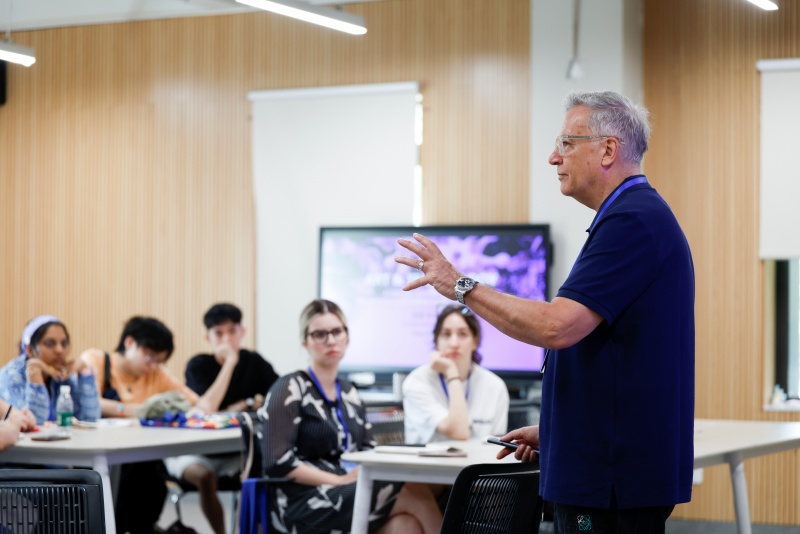
Liu An: Revitalising Intangible Cultural Heritage in the Digital Age
Liu An, a lecturer at SFD, delivered the course Flowing Traditions : Marbling Craft Meets Digital Innovation . Beginning with a historical exploration of Shui Mo dyeing in the Tang dynasty, the course traced the evolution of this intangible heritage craft from traditional ornamentation to contemporary design. In practice, students followed ancient techniques to create their own Shui Mo dyeing works and then employed technologies such as 3D modelling and digital pattern reconstruction to achieve modern reinterpretations of traditional motifs. Through the integration of interactive water-surface installations, the course demonstrated the profound fusion of heritage crafts with digital technology, enabling a meaningful dialogue between tradition and innovation.
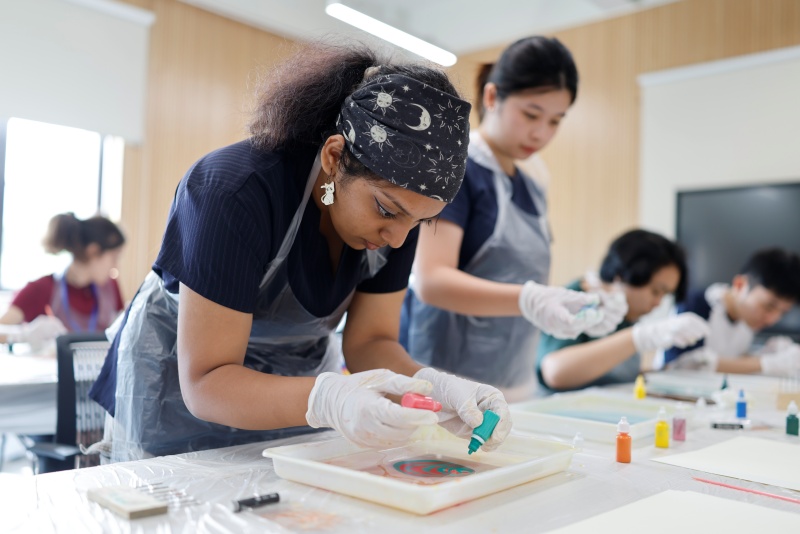
Marco Bidin & Zhou Tiange: The Digital Translation of Sound and Cross-Media Synergy
Associate Professor Marco Bidin of Xinghai Conservatory of Music and Zhou Tiange, Head of Art and Technology at SFD, jointly offered the course Media, Music and Technology , which sought to transcend the boundaries of artistic disciplines and expand the dimensions of creative expression in the digital age. Through software-based instruction and interactive discussion, the two professors guided students to uncover sound materials from everyday life. In the practical sessions, students produced both individual and collaborative sound works, experimenting with the application of soundwave visualisation technologies—transforming audio tracks into dynamic imagery. In the final presentation, these creations were integrated with marbling craft patterns, achieving a cross-media fusion that embodied the course’s ethos: “technology empowers creativity, and media transcends boundaries.”
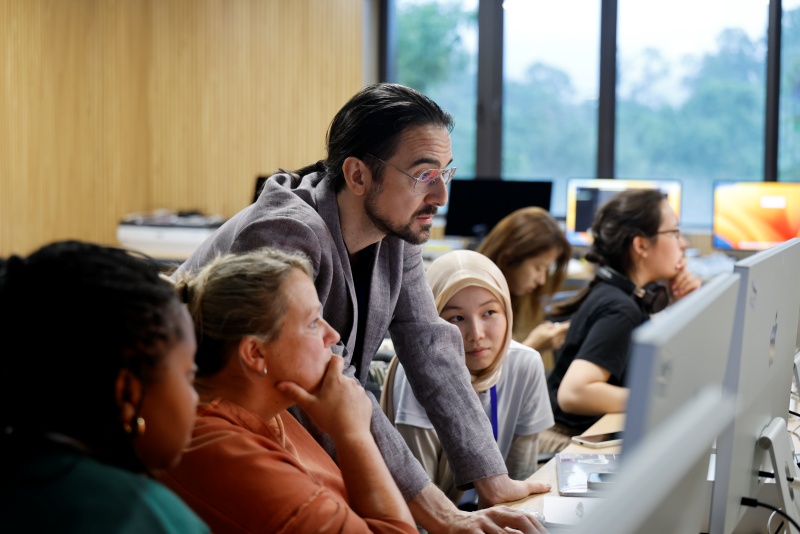
A Classroom on the Move: Experiencing Innovation Leadership in the City
The Summer School organised field trips for participants to Shenzhen, Guangzhou, and Zhuhai - three distinctive cities in the Greater Bay Area—enabling them to engage directly with the pulse of design innovation in China. Immersed in real-world settings, students experienced the interplay between tradition and modernity, thereby deepening their understanding of the essence of innovation leadership: namely, respecting cultural roots, grasping contemporary trends, and applying design thinking to address complex challenges and lead transformative change.
Shenzhen: Insights into Innovation from the Synergy of Technology and Art
The Shenzhen programme focused on the interrelationship between technology, art, and design. Students visited Lenovo’s Shenzhen Centre to observe the pivotal role of design-driven innovation in technological breakthroughs within the field of intelligent manufacturing, and to understand the logic of human-centred design thinking in the process of technological transformation. Through visits to the Frida Kahlo Art Exhibition and the Form of the Formless exhibition of technological art, they explored art as a source of innovation and the importance of interdisciplinary integration in expanding the boundaries of creativity. This visit deepened their understanding of how technology empowers art, and design serves as a bridge between technology and humanity , extending their practice of innovation leadership into the realm of symbiosis between technology and art.
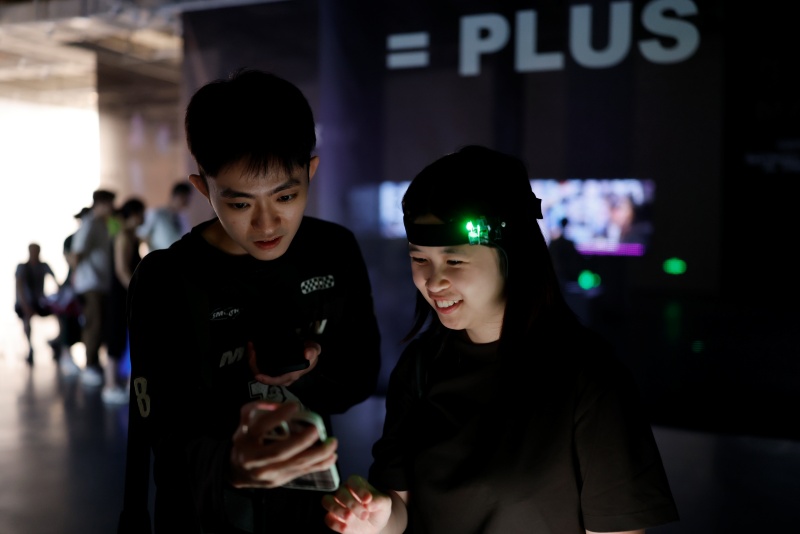
Guangzhou: Cultural Renewal and Systemic Design Amid the Dialogue of Past and Present
The Guangzhou visit showcased how profound historical heritage can be infused with the vitality of a modern metropolis, with systemic design thinking driving sustainable urban development. At Yongqing Fang, students witnessed the design leadership embedded in urban regeneration under the philosophy of “micro-renovation”, gaining insights into the balance between preserving historical textures and meeting contemporary functional needs. At Guangdong Museum, they examined cases of innovation in traditional craftsmanship, understanding the role of new materials in addressing issues of sustainability. Through visits to landmarks such as Zhujiang New Town and Canton Tower, they experienced how iconic design contributes to shaping urban identity and international image. This journey enabled students to grasp design methodologies that harmonise heritage activation with modern development , thereby deepening their understanding of systemic design thinking across different scales.
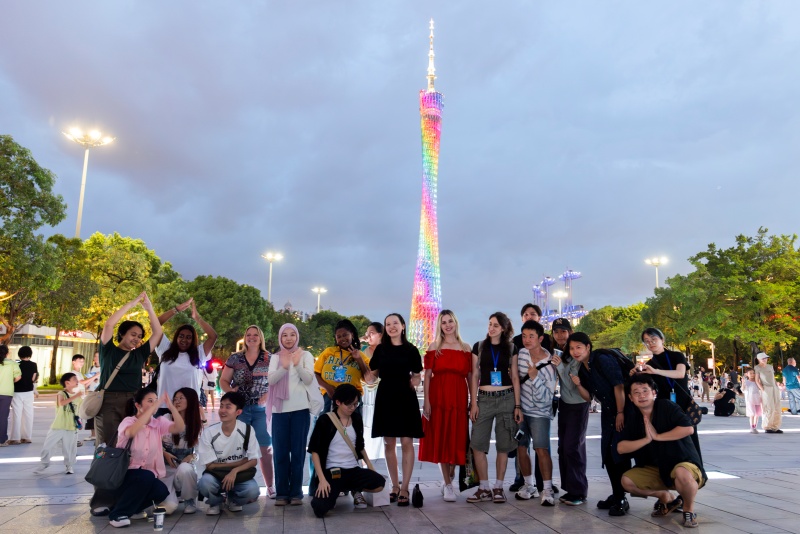
Zhuhai: Design Wisdom in Historical Roots and Innovative Inheritance
The Zhuhai programme guided students to draw inspiration for innovation from history and cultural heritage. In Tangjia Ancient Town, they experienced first-hand the exquisite craftsmanship of traditional textile arts such as Xiangyunsha (fragrant cloud gauze), and through exchanges with artisans reflected deeply on how intangible cultural heritage might be revitalised through design innovation in contemporary society. From the observation deck of Zhuhai Tower, they took in the panoramic view of Macao, Hengqin, and Zhuhai’s Shizimen district, directly experiencing the dynamism of Zhuhai-Macao cooperation and the forward-looking urban planning of the region. Along the way, the distant view of the Hong Kong–Zhuhai–Macao Bridge, a modern engineering marvel, offered students a tangible sense of China’s grand vision and exceptional capacity in infrastructure and collaborative development. At the Yang Family Ancestral Hall in Beishan Village, students examined in detail the intricate artistry of stone, brick, and wood carvings, as well as the precise spatial layout of the ancestral hall. From these, they discerned the systemic design thinking, communal wisdom, and sustainability principles embodied in traditional Chinese architecture. This visit reinforced the understanding that historical lineage is not a static legacy, but can serve as a wellspring of contemporary practice through design innovation - strengthening the innovation leadership principle of respecting cultural root.
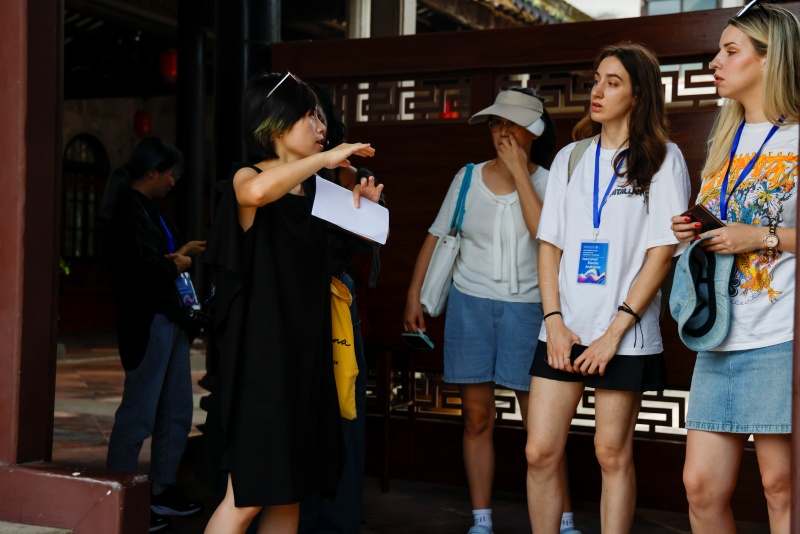
Closing Ceremony: Learning Together, Growing Together
On 23 July, the Summer School concluded with a closing ceremony that opened with presentations of the participants’ creative achievements. Divided into eight groups, the students delivered their final project reports centred on the theme of Design and Innovation Leadership , showcasing in-depth dialogues between tradition and modernity, technology and the humanities.
In his concluding remarks, Dean Gao Peng gave full recognition to the students’ works and spoke highly of their active participation and outstanding performance. He observed that the Summer School was not only a journey of artistic learning, but also a celebration of cultural exchange, friendship, and intellectual dialogue. Through interaction, both Chinese and international students learned from one another, enhanced mutual understanding, and deepened personal bonds. He expressed his heartfelt wish that the friendships forged during this shared journey of study and exploration would transcend borders and endure over time.
At the close of the ceremony, Dean Gao Peng and Professor Tony Brown jointly presented the certificates of completion. Amidst warm applause, the students posed proudly with their certificates, bringing this cross-cultural exploration of innovation to a fitting conclusion.
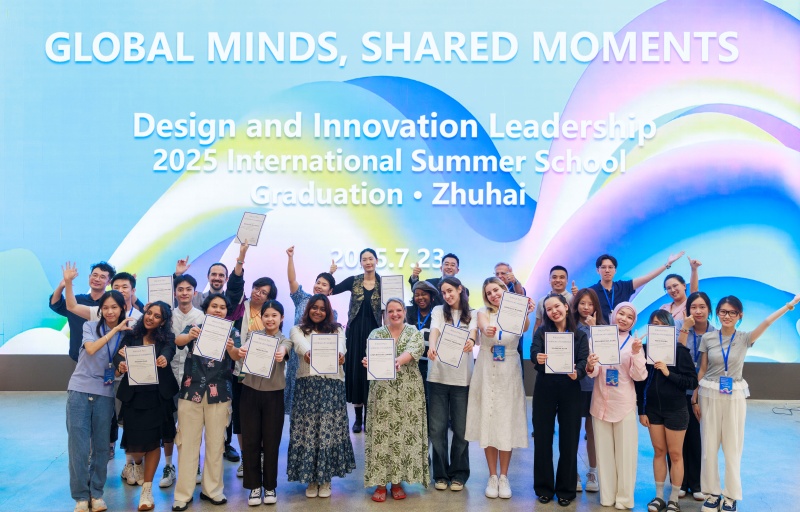
Reflections: Growth and Insights from Cross-Cultural Encounters
Anisha Sanmugathasan Rachel
Bournemouth University of the Arts, United Kingdom
When I got the email from my university about the opportunity to go to China, I was so happy and so excited for this new journey!Saying the last 10 days were a dream, would be an understatement. I made such good friends in such a short time who I will hold so close for the rest of my life. I learnt so many new skills and make work that I was proud of, are amazing food and truly immersed myself in the culture i was surrounded by.
The university was by far the most beautiful campus I've ever seen and so homely and nature filled, I felt excited to wake up and looked forward for the day ahead. The professors were so amazing and insightful, I learnt so many things I wouldn’t never been able to try otherwise and hearing about their accomplishments was very inspiring.
Finally the student volunteers were beyond amazing, they were so so helpful and caring and funny and truly they are what I will most about China! They were so excited to show us their world and culture and go to spots and were also equally excited to learn more about where we came from and our cultures and languages. Thank you so much for this experience and opportunity, it is something I will never forget it take for granted.
Aisha Bolganbayeva
SDU University, Kazakhstan
As a future language teacher, I was curious, and honestly a bit intimidated, about how a program focused on design and art could be useful for me. However, these ten days turned out to be far better than I expected. I gained new knowledge, discovered a new interest, and made great friends along the way. We traveled to several cities in Guangdong province, and I truly felt immersed in the culture and the warmth of the people.
I’m very grateful for this opportunity. Our teachers were incredibly supportive and made sure everything was understandable, even for someone like me with no background in art or design.While working on our final project, I realized how much progress I had made. I arrived with no prior experience, but I completed the camp successfully and left with a real interest in art.

